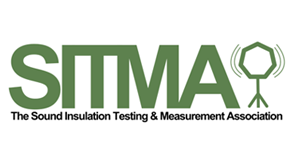Offices Nationwide

Good Hearing?
A typical person with good hearing can hear from about 20Hz to 20kHz (the audio bandwidth). A person's voice will usually range from 500Hz to 2kHz.



Sound Insulation
Two parameters are used to describe the sound insulation of a partition, Dw and Rw. Dw represents the sound insulation between rooms on-site. Since these figures describe the fnal site requirements, Dw levels are specified by clients and Building Regulations. Rw represents the lab tested sound insulation of an element making up a partition wall/floor type. Due to flanking and other factors, lab rated sound reduction levels will not be achieved on-site. Conventionally, there is a 5 to 10 dB reduction between a Rw lab tested figure and an on-site Dw figure. The conversion between Dw and Rw is relatively complex and takes into consideration receiver room volume, receiver room reverberation times and the area of the separating partition. The conversion between Rw and Dw should always be calculated.



Point of Reference
Points of Reference *measured in dBA or decibels:
- 0 The softest sound a person can hear with normal hearing
- 10 normal breathing
- 20 whispering at 5 feet
- 30 soft whisper
- 50 rainfall
- 60 normal conversation
- 110 shouting in ear
- 120 thunder



Sound Transmissions
Sound transmission paths can be interrupted by sound insulation and by blocking air paths. The sound insulation of a single leaf of a material is governed by its mass, stiffening and damping.
The sound insulation across a good conventional, lightweight, office to office construction is typically in the order of 45 dB Dw. This means that if the sound level in the source room is around 65 dB, (a typical level for speech) the sound level in the adjacent room, the receiver room, will be approximately 20 dB (barely audible). If sound levels are increased in the source room however, to 75 dB (raised voice), sound levels within the adjacent room will also increase to around 30 dB (audible). Sound insulation therefore describes the level of sound lost across a partition and not the level of sound within an adjacent room.
Dw represents the sound insulation between rooms on-site. Rw represents the lab tested sound insulation of an element making up a partition wall/floor type. Standards achieved in labs may not be possible on site because of the quality of workmanship and due to sound ‘flanking’ acoustic elements, that is, travelling around them through an easier path, rather than only directly through them as under lab conditions.
The building regulations part E sets minimum standards for design and construction in relation to the resistance to the passage of sound.


Copyright 2025 E2 Specialist Consultants Limited
Company No. 06728970

































